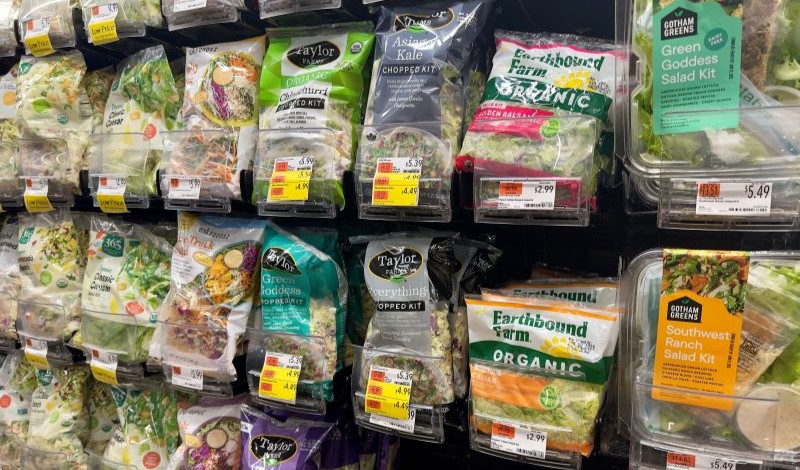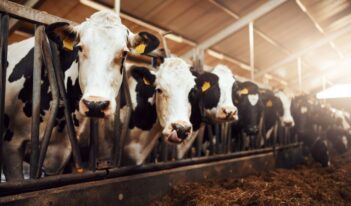
Scholar contends that USDA’s organic label veils corporate shortcuts and diluted standards.
In the United States, consumer demand for organic products surpassed $69 billion in 2023. Some researchers expect that, by 2030, the global organic market will reach a revenue of $484 billion, and large companies have caught on.
When asked about why they purchase organic food, consumers often cite support for “small, local farms.” Many consumers fail to recognize, however, that large corporations have come to dominate the organic food sector.
In a recent article, Sarah Morath of Wake Forest University School of Law identifies a growing rift between what she refers to as traditional organic and industrial organic practices.
Traditional organic practices refer to a movement intended to produce nutritious food and engage in environmental stewardship. Practices often exceed the minimum standard set by federal regulations, including by raising livestock on open pastures from birth.
Industrial organic practices, in contrast, involve large-scale corporate operations that comply with federally approved organic processes but exploit regulatory loopholes, including by maintaining low animal welfare standards and offering minimal transparency in supply chain processes.
Morath argues that a free-rider problem exists among industrial organic operations that use the organic label of the U.S. Department of Agriculture (USDA) without demonstrating the “spirit of the organic movement.”
Industrial organic producers prioritize profit and mass production over sustainable practices, including support for animal welfare and soil health, she explains.
Products that bear the organic label have undergone a voluntary certification process overseen by USDA. The certification process is required in order for a company to display the organic label on its products, Morath notes.
Morath contends, however, that many companies that choose to partake in voluntary certification processes do so “to gain a competitive advantage in the marketplace,” resulting in a race to the bottom.
As a result, the meaning of “organic” today has been diluted, Morath argues. Rather than representing the “founding spirit” of the organic movement, the market for organic products is now dominated by large corporations that follow the lowest regulatory standards permitted, Morath contends. This shift cannot be understood without examining how federal regulation shaped the organic label in the first place, she adds.
The federal government began regulating the organic label, placed on food packaging and used in grocery stores across the country, after the passage of the Organic Foods Production Act of 1990 and implementation of subsequent regulations called USDA’s National Organic Program.
USDA accredits third-party organizations to ensure compliance by farms and businesses with the National Organic Program. These third-party certifiers, acting on behalf of USDA, assess whether methods of producers comply with the National Organic Program to determine if the products qualify as organic.
Although the certification system is essential for USDA to manage the scale of organic certification, Morath points out that enforcement varies significantly among third-party certifiers.
Morath contends that three key concerns have emerged surrounding the regulation of the organic label.
First, lax enforcement and limited regulatory capacity erode trust in the organic label. Only 80 USDA certifiers oversee the certification of over 37,000 organic farms and corporations nationwide.
Second, concerns about regulatory capture by industrial organic producers emerged from current and former members of the National Organic Standards Board, the representatives from the organic market who were appointed by the Secretary of Agriculture to advise USDA on issues related to organic products, Morath adds.
Finally, widespread confusion occurs among producers and consumers as a result of producers’ conflicting interpretations of organic regulations.
For example, an interpretative issue arose when the earliest organic regulations required “year-round access to the outdoors” for livestock. Some industrial organic egg producers interpreted the phrase to include enclosed porches that did not allow the livestock to ever be in contact with soil or pasture, Morath explains. Morath contends that these practices undermine the original intent of the standard, which includes protection of animal welfare.
Morath discusses several proposed actions and reforms for lawmakers and USDA, including existing actions by USDA under trademark law, “add-on” labels that would reflect additional standards, and legislation.
The U.S. Patent Trademark Office did not grant USDA final trademark approval for the organic label until early 2022, Morath adds. Now, under the Lanham Act and Trademark Counterfeiting Act, USDA has greater authority to penalize companies that “attempt to misuse the organic seal,” Morath contends.
Under trademark law, USDA may seek civil remedies, including injunctive relief and monetary damages, when products use the organic label fraudulently or without meeting the standards for products to be certified organic.
Traditional organic farmers advocate the use of an add-on label, which would be added to products with the organic label to reflect higher standards of organic farming and distinguish traditional organic products from smaller farms from industrial organic products, Morath observes.
Through legislation and agency action, Morath argues, the federal government can close regulatory loopholes and restore consumer trust. Lawmakers and regulators must also recognize that regulating the organic industry requires thoughtfulness because such regulation begins a race to the bottom, Morath concludes. To safeguard the future of organic farming, policymakers must defend the original understanding of the term “organic” when developing additional regulations.



